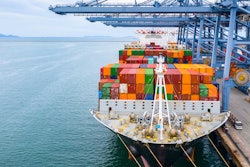
The COVID-19 pandemic has taught third-party logistics (3PL) companies two valuable lessons: first, that it’s necessary to be prepared for supply chain disruption, and second, that e-commerce will remain a bedrock of retail sales in the years to come.
To respond to this new normal, 3PLs are turning to data-driven strategies based on location analytics. Among the powerful geospatial tools available to 3PLs is point-of-interest (POI) data: geographic coordinates and other relevant information about a particular location or landmark. This can include parks, restaurants and shops as well as warehouses, roadways, street names, intersections and high-level overviews of areas within or outside cities.
Let’s take a closer look at how POI insights can be used to enhance warehouse site selection, optimize operations, and deliver superior service to customers — all competitive advantages that will position 3PLs to win in the years ahead.
Enhance warehouse site selection with POI data
Businesses can leverage POI datasets to offer location-based services, optimize routes, visualize supply chain disruptions and plot out ideal expansion locations. Coupled with AI-based analytics, POI data can also provide a window into the economic activity of a given area through the analysis of open and closed signs, construction patterns and other economic indicators.
The most pressing application of POI data for 3PLs may be site selection.
Consider the example of a growing 3PL in Charlotte, North Carolina, that's looking to build new warehouses and fulfillment centers overseas. One key to finding the ideal warehouse sites is to identify locations close to manufacturing facilities as well as urban centers where goods will be delivered, enabling savings on logistics.
To solve this problem, the company can use POI-based analytics to analyze potential international sites and find those with the best access to transportation routes. It can also optimize for sites that are the optimal distance from logistics partners, manufacturers and retail outlets to ensure efficient pickup and delivery times. Superior site selection provides the company with an advantage over its competition by minimizing logistical costs and enabling quick delivery.
Optimize operations and resource use
With an expansion site in hand, the Charlotte-based 3PL can also use POI data to manage its fleet and make adjustments to supply chain operations.
For example, the company's fleet managers can map POIs to better understand a high-use transportation area. With this data, they can see where, and how many, gas stations and truck stops lie along key routes. They can also determine where any recent service station closures might cause a potential slowdown. Armed with this information, the company can plot alternative routes, if necessary, or make efficiency adjustments to current driving patterns to reduce average transportation time and costs.
Additionally, POI data can also be used to locate new opportunities for delivery and distribution and to inform decision-making processes about where to invest more resources. Perhaps the Charlotte-based company realizes it can benefit by hiring additional drivers in the area. Usefully, it's already got the POI analytics in place to predict how more drivers on peak routes will affect performance across the supply chain and if additional routes need to be mapped out.
Deliver superior customer service with location analytics
An additional benefit of 3PLs using POI data to optimize site selection, resource allocation, and operations is the trickle-down effect on customer relations. One way this manifests is with service-level agreements (SLA). Various factors such as fraud, delivery delays, and operational inefficiencies can lead to SLA violations.
By using POI data to select optimal sites, verify partners, and streamline logistics, 3PLs can foster an excellent customer experience and cost savings, avoiding passing down undue costs to customers and boosting margins.
All of this is possible, however, because the Charlotte company was able to work with location data they could trust. Inaccurate or old datasets result in wasted resources, diminished ROI, and weakened brand equity. A 2016 report by IBM, for example, states that bad data has cost businesses upwards of $3 trillion per year, and a recent study by Gartner suggests that companies lose around $12.9 million annually due to flawed analytics.
This is particularly true of international POI data, where datasets can be messy and incomplete, oftentimes because they're pulled from multiple sources. That's why it's so important for 3PLs to be smart about their data sources and work with a partner who’s transparent and trustworthy.
On-point POI data is a difference maker for 3PLs, helping them transform their supply chain ops and guiding their expansion plans at home or abroad. By investing in high-quality, reliable POI data and working with a reputable partner, 3PLs can overcome the challenges associated with international data and unlock valuable insights that can drive success in the global marketplace.














![Pros To Know 2026 [color]](https://img.sdcexec.com/mindful/acbm/workspaces/default/uploads/2025/08/prostoknow-2026-color.mduFvhpgMk.png?ar=16%3A9&auto=format%2Ccompress&bg=fff&fill-color=fff&fit=fill&h=135&q=70&w=240)



